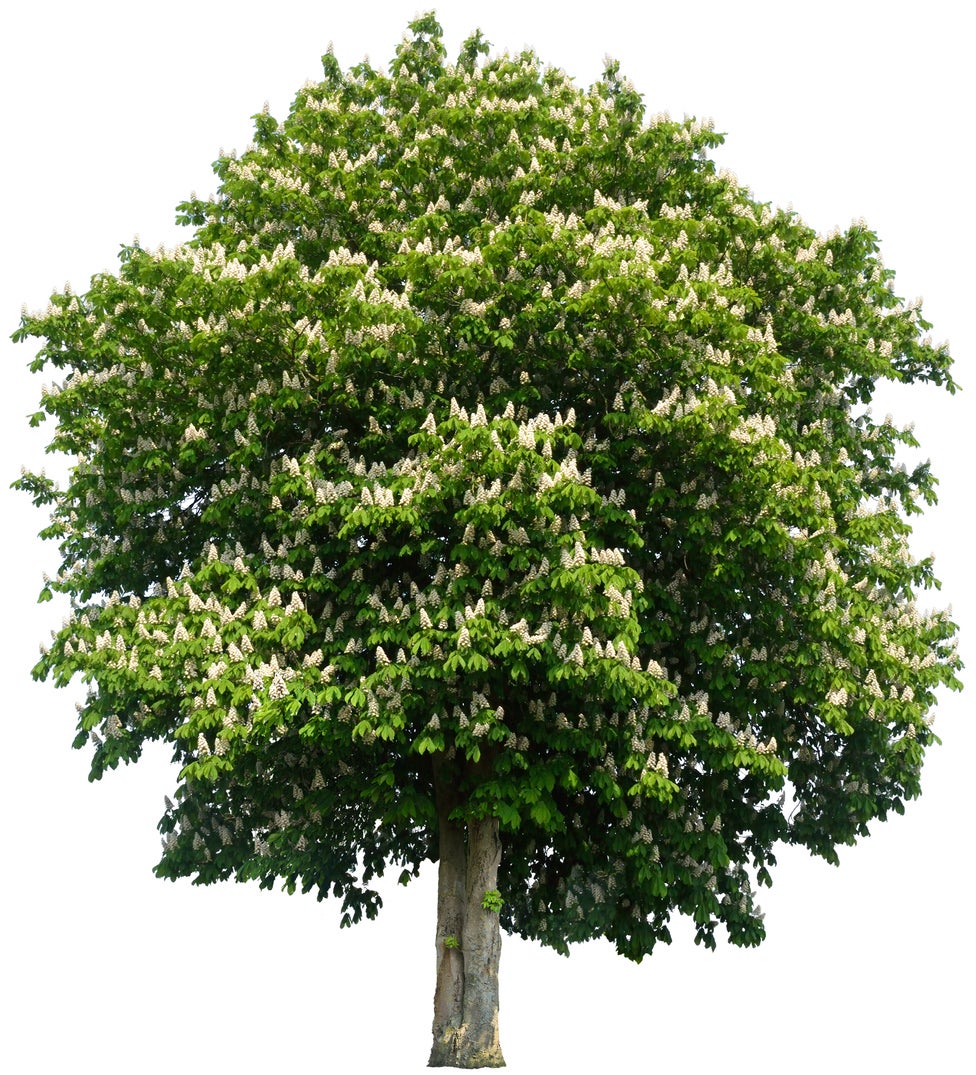Baumann Horse Chestnut Trees – Care Of Baumann Horse Chestnuts


For many homeowners, choosing and planting trees suitable to the landscape can be quite difficult. While some prefer smaller flowering shrubs, others enjoy the cooling shade offered by various types of deciduous trees. One such tree, the Baumann horse chestnut (Aesculus hippocastanum ‘Baumanii’), is an interesting combination of both of these attributes. With its beautiful flower spikes and pleasant shade in the summer, this tree may be a good fit for your landscape.
Baumann Horse Chestnut Info
Baumann horse chestnut trees are a common landscaping and street planted tree throughout much of the United States. Reaching heights of 80 feet (24.5 m.), these trees provide growers with beautiful, white, flower spikes each spring. This, in tandem with their dark green foliage, make the tree a popular option for those wishing to add curb appeal to their properties.
Though the name may imply it, Baumann horse chestnut trees are not members of the edible chestnut family. Like other horse chestnuts, all parts of this tree are toxic, containing a poisonous toxin called esculin, and should not be eaten by humans or livestock.
Growing a Baumann Horse Chestnut
Growing a Baumann horse chestnut tree is relatively simple. For best results, those wishing to do so should first locate a transplant. Depending upon your growing region, these transplants are likely to be found at local plant nurseries or garden centers.
Choose a well-draining location in the yard that receives at least 6-8 hours of sunlight each day. To plant, dig a hole at least twice the depth and twice the width of the root ball of the tree. Place the tree into the hole and gently fill the dirt around the root zone to the crown of the plant.
Water the planting and ensure that it remains consistently moist as the tree becomes established.
Care of Baumann Horse Chestnuts
Beyond planting, horse chestnut trees will require minimal attention from growers. Throughout the growing season, it will be important to frequently monitor signs of distress in the tree. In regions with hot summers, trees may become stressed by a lack of water. This may cause the overall health of the foliage to decline.
Sign up for the Gardening Know How newsletter today and receive a free copy of our e-book "How to Grow Delicious Tomatoes".
When the plants become stressed, the tree will become more susceptible to common fungal issues and insect pressure. Monitoring the plant closely will help growers respond to these threats and treat them appropriately.

Tonya Barnett has been gardening for 13 years. Flowers are her passion. She has transformed her backyard into a cut flower garden, which she regularly chronicles on her YouTube channel http://www.youtube.com/@tonyawiththeflowers.